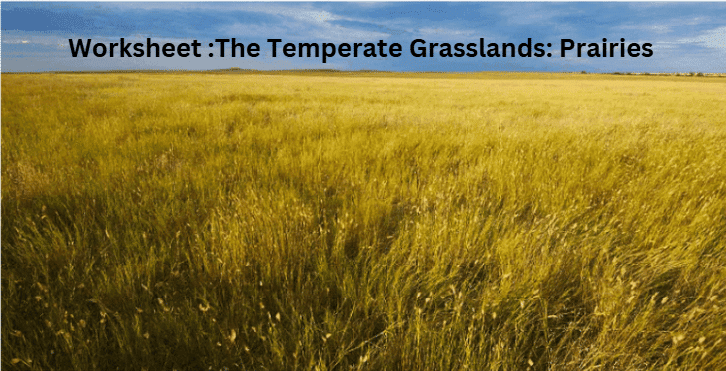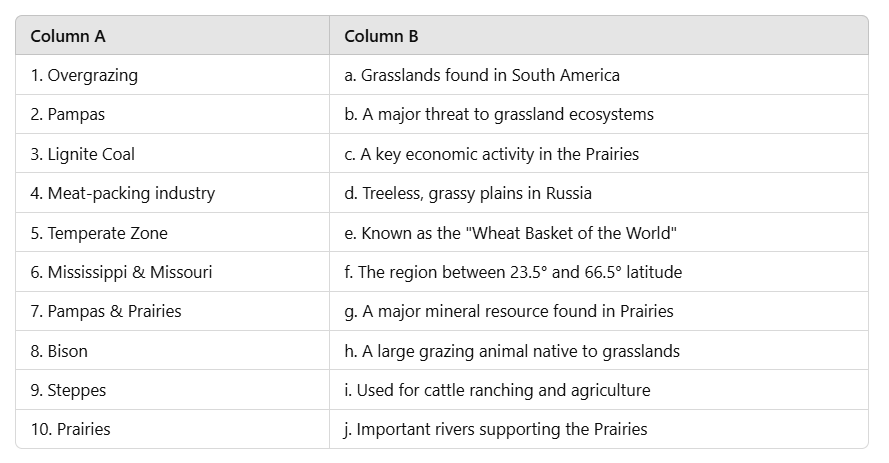The Temperate Grasslands: Prairies - 2 Class 5 Worksheet SST
| Table of contents |

|
| Find the Odd One Out and Give Reason |

|
| Match the Following |

|
| Real-Life Application Based Questions |

|
| True or False |

|

Find the Odd One Out and Give Reason
(i) Prairies, Pampas, Steppes, Rainforest(ii) Bison, Elephant, Antelope, Prairie Dog
(iii) Wheat, Maize, Rice, Barley
(iv) Mississippi, Missouri, Amazon, Murray-Darling
(v) Ploughing, Threshing, Fishing, Harvesting
Match the Following

Real-Life Application Based Questions
(i) Why are farmers in the Prairies able to produce more wheat than they need?(ii) Why do many grassland animals like bison and antelope run fast?
(iii) Why are grasslands in some regions shrinking over time?
(iv) Why is cattle ranching common in the Pampas and Prairies?
(v) Why are there fewer trees in the grasslands compared to forests?
True or False
(i) Temperate grasslands have extreme climate conditions with hot summers and cold winters.(ii) Grasslands cover more than half of the Earth’s surface.
(iii) The Prairies are also called "The Wheat Basket of the World."
(iv) Elephants are the most common large animals in temperate grasslands.
(v) The Pampas of South America are mainly used for cattle ranching.
(vi) Most farming in the grasslands is done manually without machinery.
(vii) The Mississippi and Missouri rivers provide irrigation to the Prairies.
(viii) The Steppes in Russia are known for their dense forests.
(ix) Grasslands are home to over 1 billion people.
(x) Overgrazing and human interference pose threats to grassland ecosystems.
You can access the solutions to this worksheet here.
|
33 videos|419 docs|50 tests
|
FAQs on The Temperate Grasslands: Prairies - 2 Class 5 Worksheet SST
| 1. What are the main characteristics of temperate grasslands like prairies? |  |
| 2. Why are prairies important for the environment? |  |
| 3. What types of animals can be found in temperate grasslands? |  |
| 4. How do human activities impact prairies? |  |
| 5. What can be done to conserve temperate grasslands? |  |















